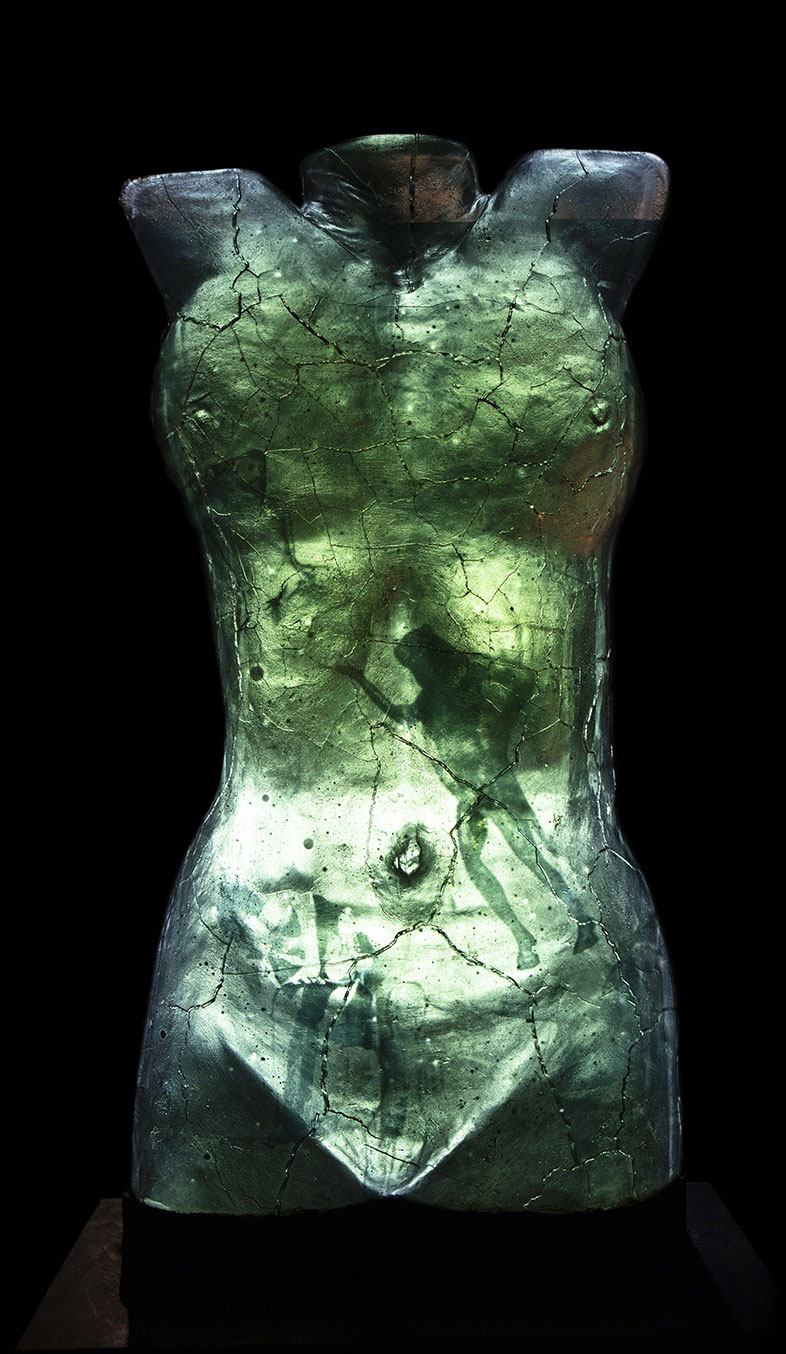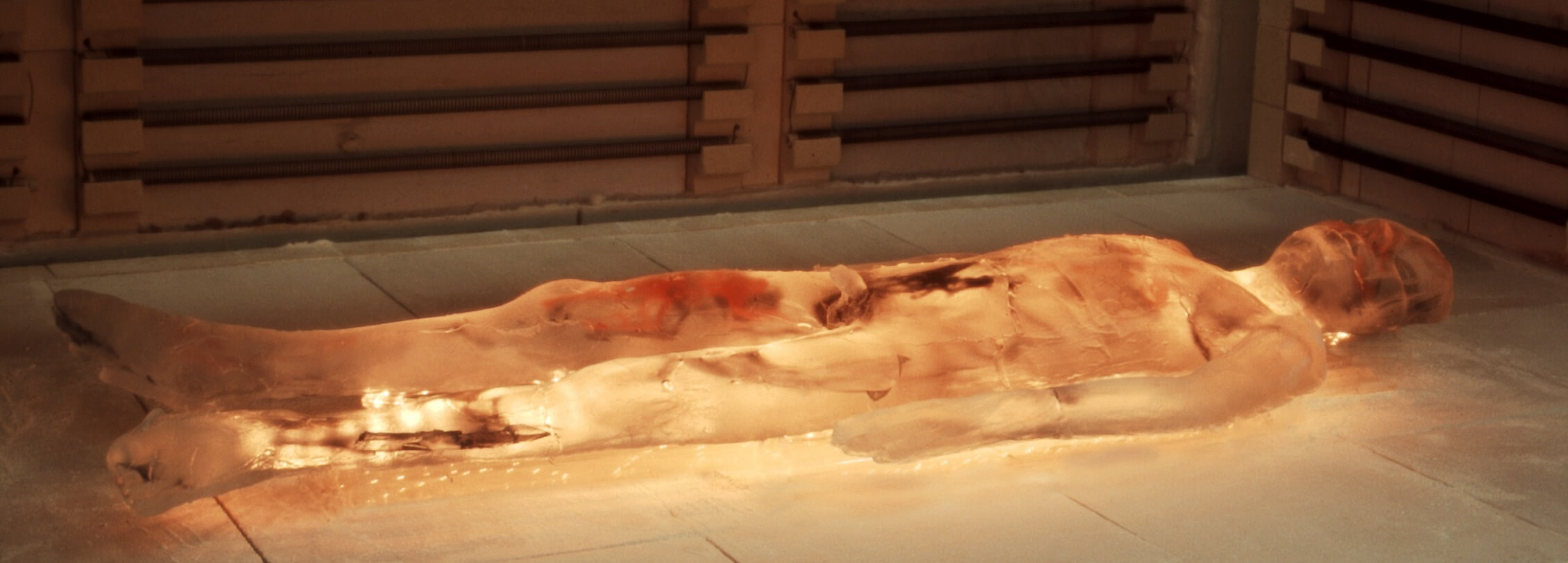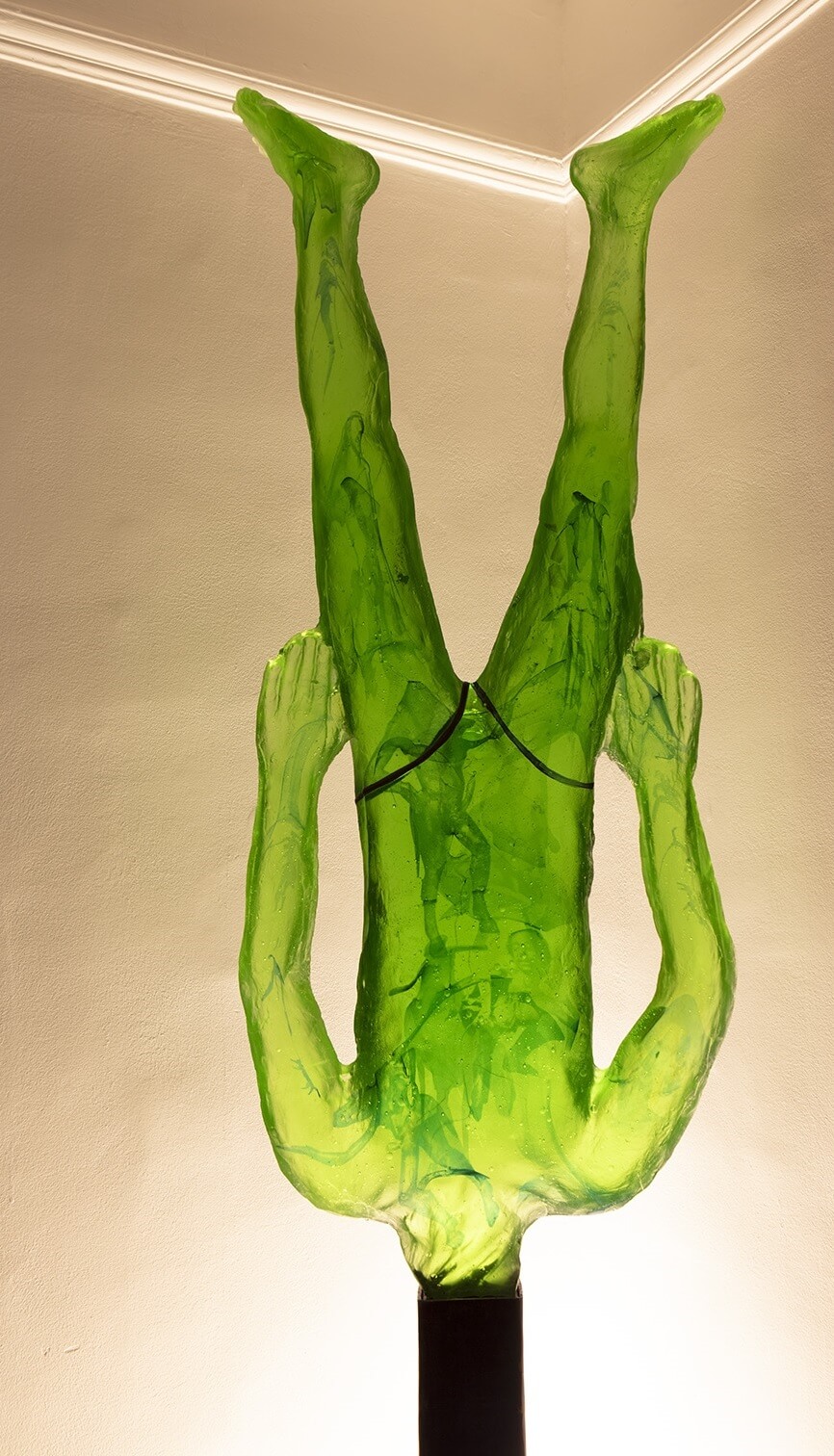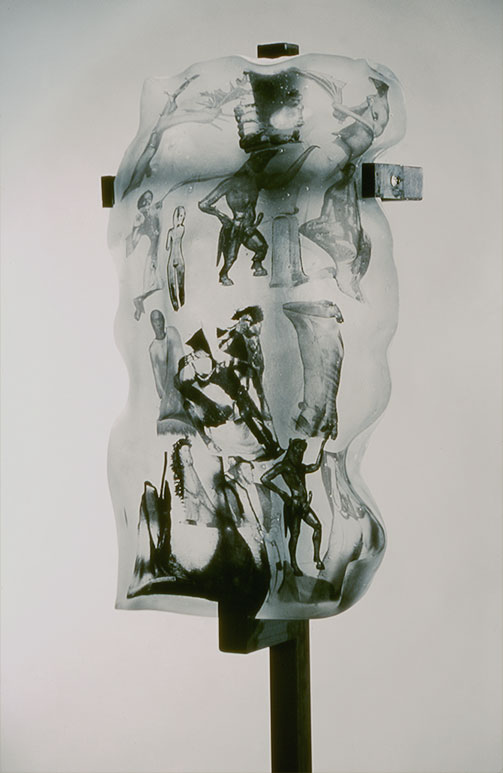
Outer Shell: Inner Space
Where does the truth lie? To explore this subject fully in my work I needed to discover, consider and utilise an additional space. Usually space is invisible until it is occupied, but in traditional opaque sculpture the object often masks the internal space. By using glass, a transparent or semi-transparent medium it is possible to make this internal space visible and allow forms to be created within this space. Using both the outer shell and the internal space allows me to explore the theme of where “truth” lies which so demands my attention. I use inclusions within the sculpture to explore the internal space: I continually experiment with different forms of inclusion, be these images or different materials, in order to be able to communicate my message.
One of the subjects of my investigations, in which I employ the inclusions applications in inner space, is the body in a sculpture and why it evokes contradictory reactions. Many of my explorations of the body are concerned with the discrepancy between how we view the body and nudity in cultural contexts and how we view them in the real world.
In classical and prehistoric art contexts nude bodies are seen as entirely acceptable whereas in real life we do not talk about nakedness, find it uncomfortable, rude or even taboo. In classical art contexts bodies tend to be stereotypically beautiful but in real life that is not how bodies are, even before considering how the interpretation of beauty changes over time and between cultures.
Newspaper draws our attention to the reality of a naked Jesus on the cross (which is how he was represented until approximately the 5th Century) and our contemporary discomfort with nudity and sex.




